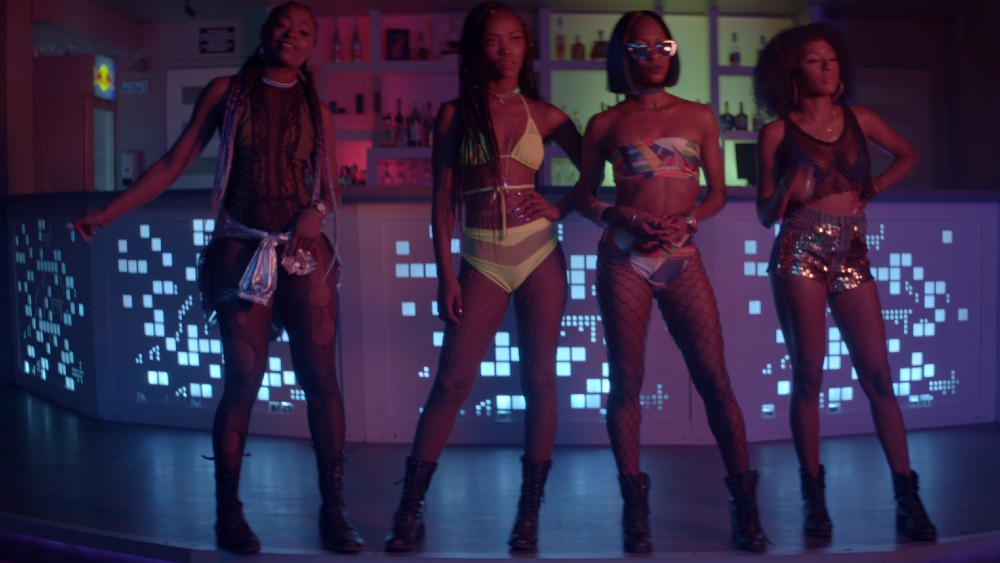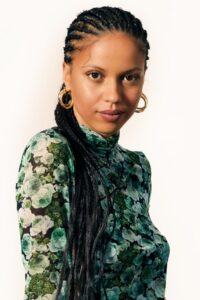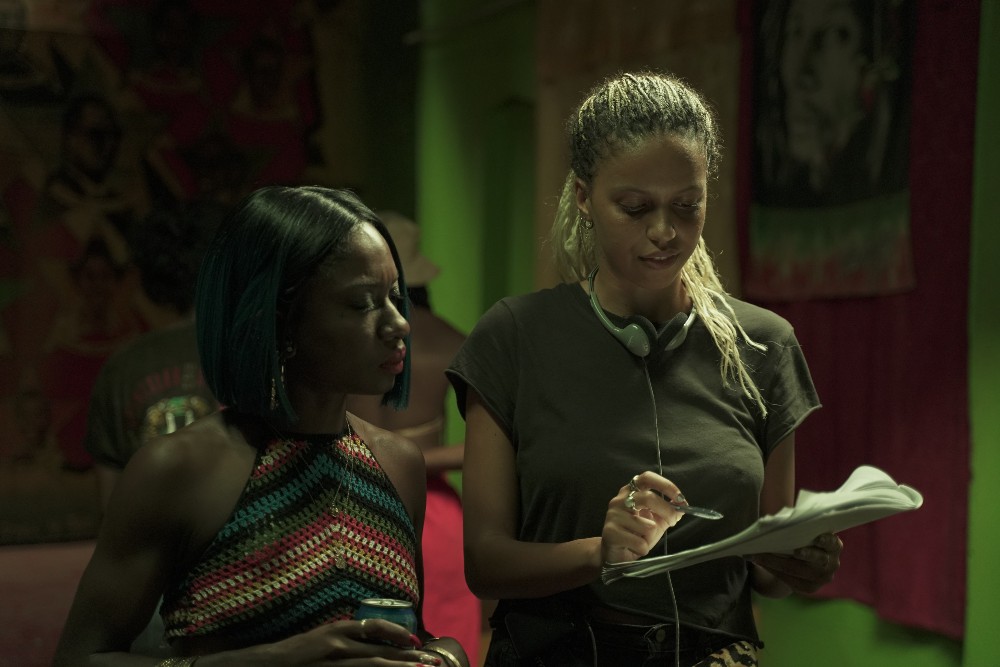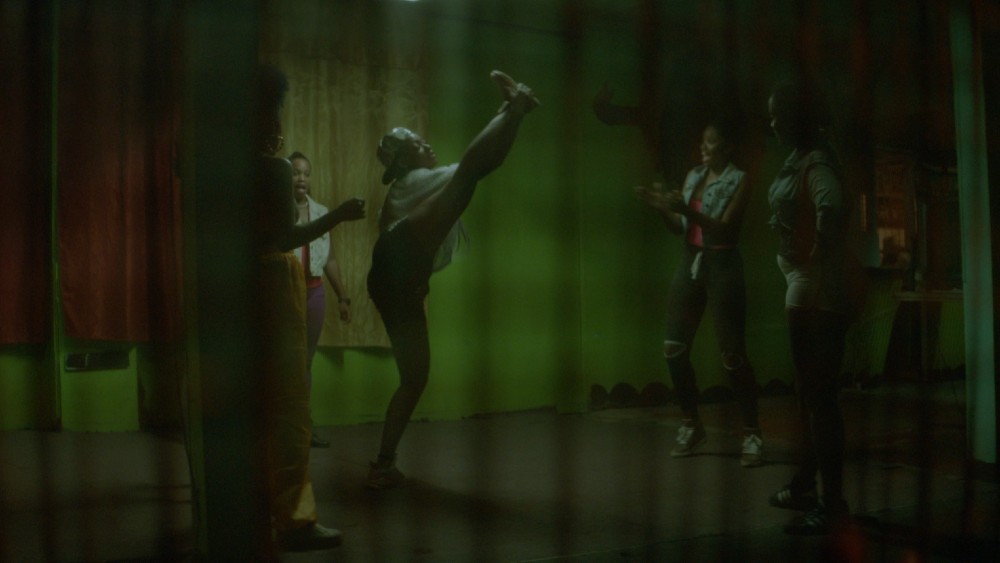
The women of Trinidad, who use dance as an escape from their lackluster lives at home, are the subject of She Paradise, the debut feature film from Maya Cozier. At the heart of the story is Sparkle, who sees soca dancing as a way out of her dreary existence at home and into a world of wealth and glamour, supported by a sisterhood she comes to embrace as family.
Trinidadian-born Cozier, who co-wrote the film with Melina Brown, a fellow school graduate, knows these women all too well, as she grew up among them. She Paradise is fiction, but it resembles Sparkle’s journey in the film as she used dancing to express herself. Growing up in Port of Spain, Cozier was also an accomplished dancer/choreographer for music videos and television shows. At the age of 18, she was selected as a back-up model for a Nicki Minaj music video “Pound The Alarm,” which shot in Trinidad.
That opportunity introduced her to filmmaking, and her dreams were realized when she was awarded a national academic scholarship to the School of Visual Arts, in New York, where she pursued a degree in film. Her first short film, Shan was about a childhood friend, a limbo dancer, who makes an appearance in She Paradise; which Cozier views as a kind of continuation of her story.

Below the Line spoke with Maya Cozier about the casting process for her debut feature film, which included hiring some of her high school friends and reaching out on social media. As for the dancing, she talks about the true Caribbean origins of “twerking.” She talks about how the story is a very personal one that she needed to tell to educate people about the realistic circumstances women still face in Trinidad, as well as to entertain in this coming-of-age story.
Below The Line: Can you talk about your personal connection to the story?
Maya Cozier: I was a dancer and a model before getting into film making. At 16, I was a part of an all-girls dance group that was on television every week for this Caribbean Invitation of America dance group. Every week we would come up with different dance challenges and find different costumes to go on TV. This experience of being around that sisterhood and being around those women for extended periods off-stage and onstage, and traveling to gigs, which was such an informative moment for my coming of age. Those friendships influence me to this day.
BTL: Were those relationships the seed for the story line for She Paradise?
Cozier: They were a huge inspiration for making this coming-of-age film and to explore those experiences around that sisterhood and dance from my memories growing up in Trinidad.
BTL: What was the inspiration to write the film with Melina Brown?
Cozier: Melina grew up in Florida, but she has Jamaican parentage and she’s always been passionate about making stories and films about the Caribbean. The idea was a conversation about sharing similar passions and wanting to redefine the Caribbean space and capture a contemporary Caribbean space, but also tell stories from a woman’s point of view. It was important for us to capture the complexity of the sisterhood, the complexity of the characters. We didn’t write this with the desire to tell a moral tale, but to present an honest portrayal of a woman’s coming-of-age story.

BTL: What was the casting process like? Were you looking for actors who could also dance?
Cozier: The casting process was a bit unconventional. Shan (Denisia Latchman) is somebody that I used to dance with and we went to the same high school together, so I just sort of handed her that role (laughs) Then I had a casting call, and luckily, I found Sparkle (Onessa Nestor) and Diamond (Kimberly Crichton). Mica (Chelsey Rampersad), I actually reached out to on Instagram. I sent her a direct message and asked her if she wanted to audition. Most people are dancers with a little acting experience. Mica is neither a dancer nor an actor. There is a mix in there to finding these women.
BTL: What was the level of experience with the dancers in the film?
Cozier: Diamond had some acting experience before she did this film, but she could move. And then Mica had very little dance experience. We were just lucky in the sense that all the actors who were non-dancers were able to pick up the choreography. Of course, the choreographer had a little extra time showing them the ropes. Shan was able to get it right away and had to patiently sit and wait on the side while everybody had to catch up.
BTL: How did you make the transition from being a dancer to directing?
Cozier: I wasn’t really sure what I wanted my focus to be, so I started taking a course at the School of Visual Arts on documentary filmmaking and that’s when I made Shan, my first film. I was raised by artists in the Caribbean, so growing up I had a lot of interests. I danced. I modeled. I also was a painter and was really interested in sculpture, so when I went away to school I actually went for Fine Arts. When I decided I wanted to focus on filmmaking, I knew very little about it, but I do feel like dancing and performing and choreographing even as a teenager and being a part of a group and making things happen was really informative to my process as a director. There’s such a strong cohesion between choreography and direction. Those experiences are very alike.

BTL: Speaking of choreography, did twerking originate in Trinidad?
Cozier: Even though there are similarities, twerking is an Americanized way of describing the movement. That style of dance has its roots in African history in the group of diaspora. You can trace that style of movement all the way back to slavery in Trinidad. In the Caribbean, we refer to it as “whining.” Recently in the last few years, there is a trendy term of calling it twerking in the U.S.
BTL: Did you shoot this film in your hometown?
Cozier: After I graduated from school in 2016, I went back to Trinidad and spent about five years there. I spent a year writing the script, interviewing dancers and working with them. We shot mostly in Port of Spain, which is the city that I grew up in. We shot this film very guerrilla-style without permits, so we did have a couple of location challenges. The car park scene outside, the opening dance scene, we didn’t have permission to use that car park, so it did get us into some hot water when someone showed up. That was the energy of trying to make a film on a microbudget. It’s just run and done; get as much shots as you can, and hope for the best. But every location we went, people were excited to see a movie shot in their village. That really did make it fulfilling.
BTL: Were your extras the people who lived there?
Cozier: Sometimes community leaders came out to watch the filming and wanted to be on camera. It was important to keep that naturalistic, sort of real tone throughout the film. It could almost blur the line sometimes of what is real, what is staged, what is actually happening within the space. Even though it’s fiction and it’s a narrative, it was kind of refreshing to put these fictionalized situations into real spaces. There was a scene where some extras had to show up on the beach and they didn’t show up. In the moment, I had to rewrite the scene.
BTL: What were some of those stories that you wanted to tell?
Cozier: People that I interviewed were people that I knew and that I danced with and was very close to. I hadn’t been in that space in so many years, not doing it professionally, traveling the Caribbean and dancing, and being in music videos around the clock like they have been for the past few years. That stopped for me when I moved into film. It was kind of important to refresh myself and speak about what it feels like now. I’m happy that they were comfortable enough with me to open up and what it felt like to be backstage.
She Paradise is now playing in select cities and is also available to watch On Demand.
All pictures courtesy Samuel Goldwyn Films.





